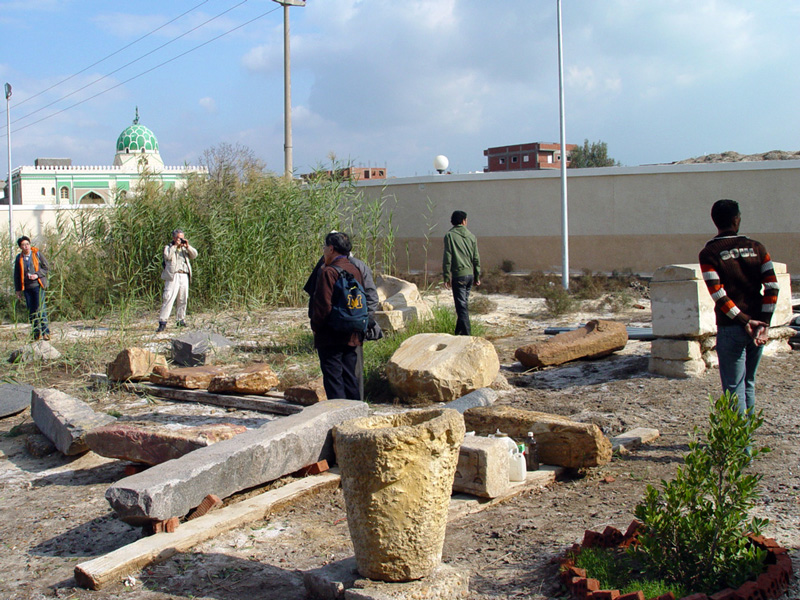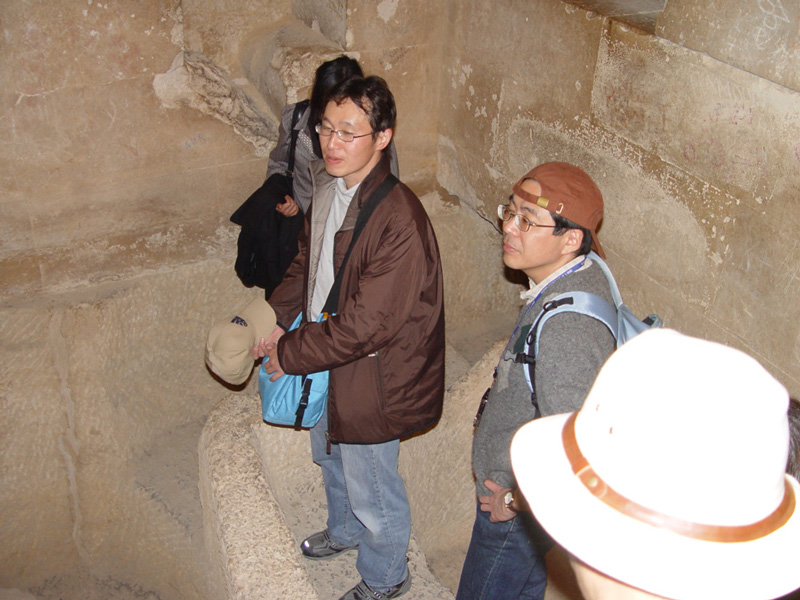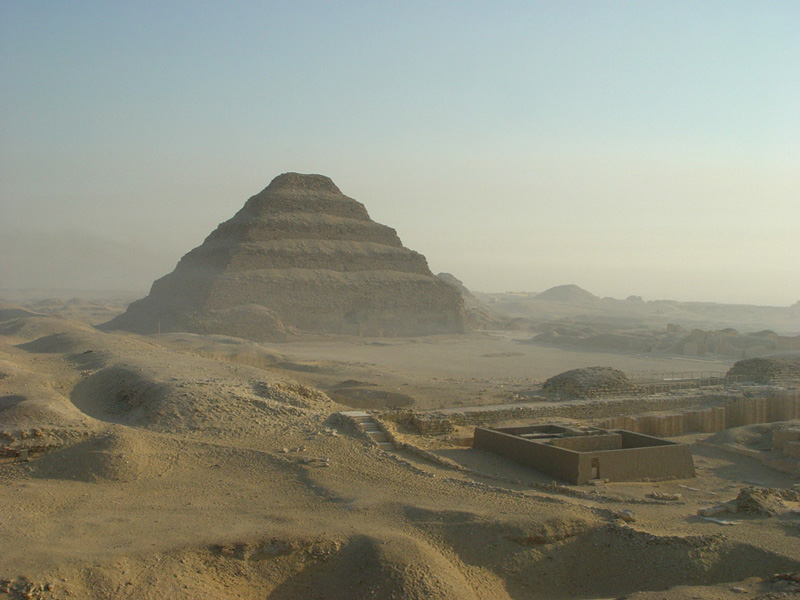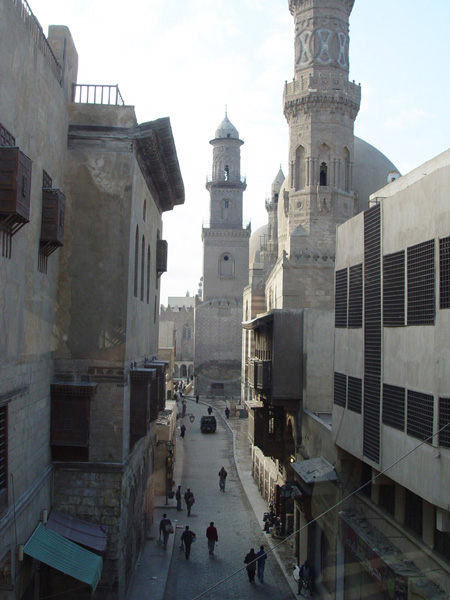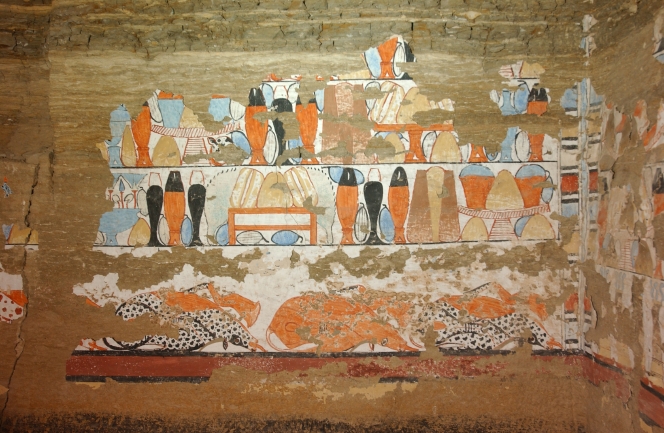
研究活動
Research Activities
– 2009
Exchange of Researchers with Cairo University
December 2009
Two researchers were dispatched from Cairo University’s Faculty of Archaeology to Kansai University, and joint research was carried out through an academic agreement between the two universities. Professor El-Sayed M. El-Banna (Department of Conservation and Restoration) spent one month at Kansai University, while Professor Ahmed Shoeib (Department of Conservation and Restoration) stayed for two months. Their visit was a continuation of the previous visits by Professor Ahmed Galal (Department of Egyptology) and Professor Salah El-Kholi (Department of Egyptology) last year.
The ICP took this opportunity to exchange views regarding research with both professors, and also held several research meetings. These activities were attended by undergraduate and graduate students as well as members of the ICP, and research was performed related to the conservation of Egyptian and other Arabic cultural properties – which can’t be sufficiently carried out in Japan due to a lack of accumulated research knowledge.
Professor El-Sayed M. El-Banna’s field of study is the conservation of bronze ware and the preservation of historical cities in Yemen, while Professor Ahmed Shoeib’s field of study is the conservation of mural paintings. Both professors also participated in the symposium described below.
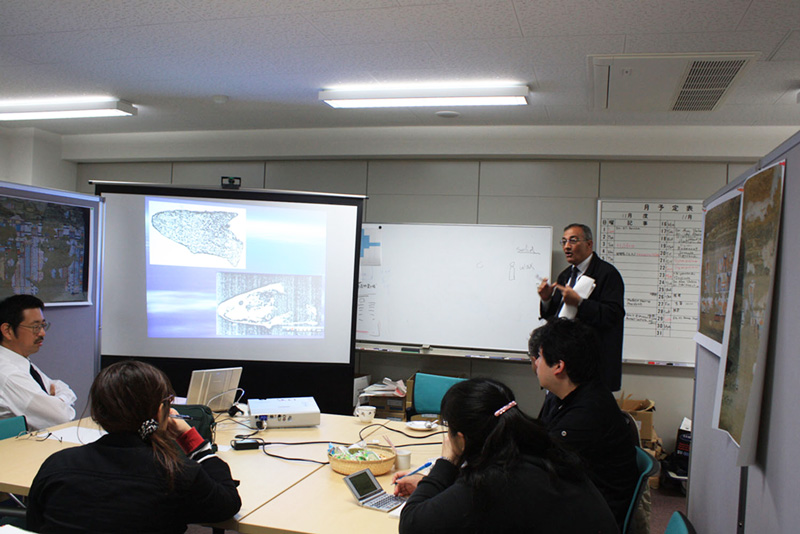
The 1st International Symposium
November 21-22, 2009
The 1st International Symposium was held at Kansai University in order to present the research results of ICP researchers. Professor Alaaeldin M. Shaheen (Cairo University, Egypt), an Egyptology scholar, was invited to the symposium from Cairo University. Professor El-Sayed M. El-Banna (Cairo University, Egypt), a researcher in the field of cultural property conservation who came to Kansai University through an academic exchange agreement between Kansai University and Cairo University, also gave a presentation.
Presentations were given on a wide range of topics related to the ICP’s research issues. One of these presentations which was especially valuable from an international standpoint was on the deterioration of Ancient Egyptian mural paintings, as well as specific processes, given by an Egyptian researcher in the Conservation and Restoration Group. The presentation given by the Culture and Town Group discussed studies which had not been performed by traditional Egyptian survey teams, and the presentation by the Technology Development Group featured results which could only have been obtained through joint Japanese-Egyptian research. In addition to the accumulation of sound results by the Geotechnical Engineering Group, Japanese researchers in the Conservation and Restoration Group positioned this research on an international basis. This symposium was unique in its international and interdisciplinary qualities, and also featured a wide range of research content in the humanities and sciences.
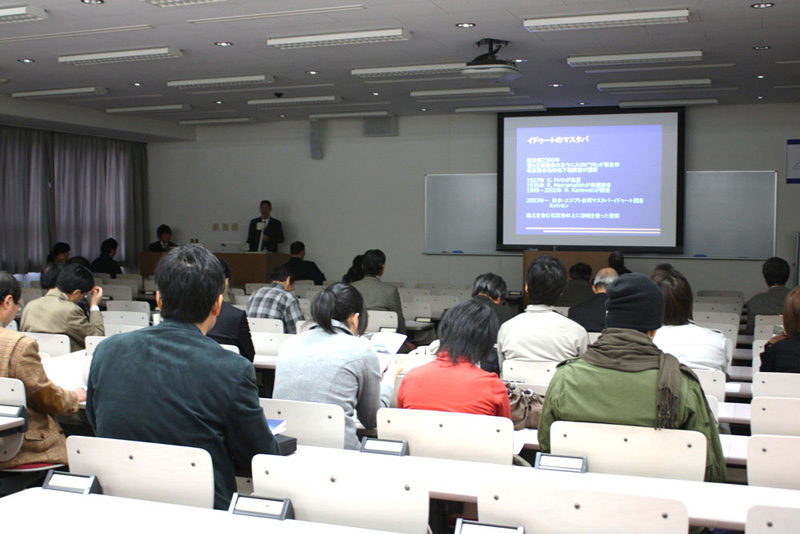
The Egyptian-Japanese Mission for the Mastaba Idout
June-September 2009
A survey was carried out regarding the restoration of mural paintings in Idout at Saqqara as the seventh survey for the Egyptian-Japanese Mission for the Mastaba Idout.
Participants studied the bedrock deterioration situation, which is a major cause of the deterioration of mural paintings. Issues such as this one related to earth sciences apply not only to the Saqqara region but to the Giza region as well. Data was collected using equipment such as displacement gauges that were placed in the underground burial chamber, and data was gathered for analyzing the structure of the ground. In addition, rock quality in the Saqqara region was also studied.
As a continuation of the previous survey, environmental data (relative humidity and atmospheric temperature) was collected inside the burial chamber. The participants also considered methods and materials for the restoration of the mural paintings. Efforts are currently being made to improve restoration technologies through detaching the mural paintings, and restoration technologies are being developed to cope with the fact that the state of deterioration of the underground burial chamber murals is not uniform.
At the same time, research is continuing on the role of Ancient Egypt cultural properties. While comparing the mural paintings with other historical sites, participants considered what how they might have appeared originally and how the restored murals should be used. Field surveys were also carried out in the village of Saqqara in order to investigate relationships between the site and the local community.
Equipment such as X-ray analysis devices was also used in order to perform various types of analysis – including those related to pigments – on the ancient mural paintings in order to contribute to restoration and the understanding of ancient technologies.
A survey was carried out regarding the restoration of mural paintings in Idout at Saqqara as the seventh survey for the Egyptian-Japanese Mission for the Mastaba Idout.
Participants studied the bedrock deterioration situation, which is a major cause of the deterioration of mural paintings. Issues such as this one related to earth sciences apply not only to the Saqqara region but to the Giza region as well. Data was collected using equipment such as displacement gauges that were placed in the underground burial chamber, and data was gathered for analyzing the structure of the ground. In addition, rock quality in the Saqqara region was also studied.
As a continuation of the previous survey, environmental data (relative humidity and atmospheric temperature) was collected inside the burial chamber. The participants also considered methods and materials for the restoration of the mural paintings. Efforts are currently being made to improve restoration technologies through detaching the mural paintings, and restoration technologies are being developed to cope with the fact that the state of deterioration of the underground burial chamber murals is not uniform.
At the same time, research is continuing on the role of Ancient Egypt cultural properties. While comparing the mural paintings with other historical sites, participants considered what how they might have appeared originally and how the restored murals should be used. Field surveys were also carried out in the village of Saqqara in order to investigate relationships between the site and the local community.
Equipment such as X-ray analysis devices was also used in order to perform various types of analysis – including those related to pigments – on the ancient mural paintings in order to contribute to restoration and the understanding of ancient technologies.
* Through the assistance of the Sumitomo Foundation, work was also carried out to restore the mural paintings at the same time as this survey.
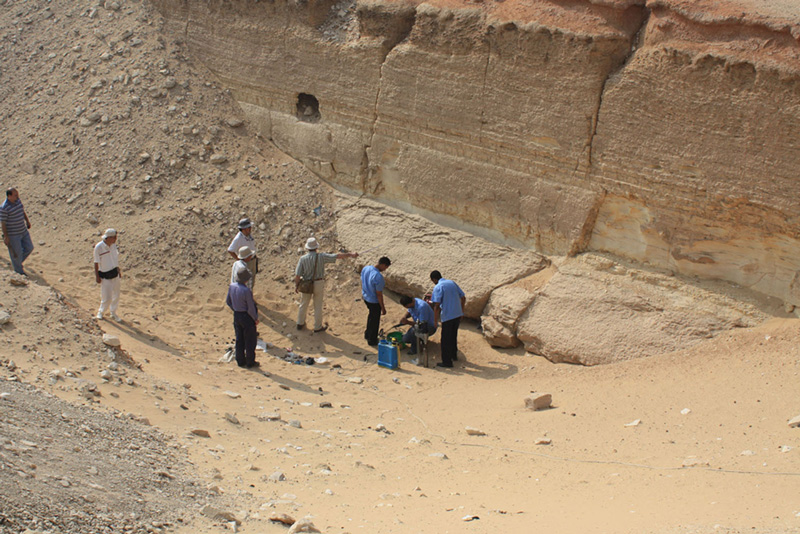
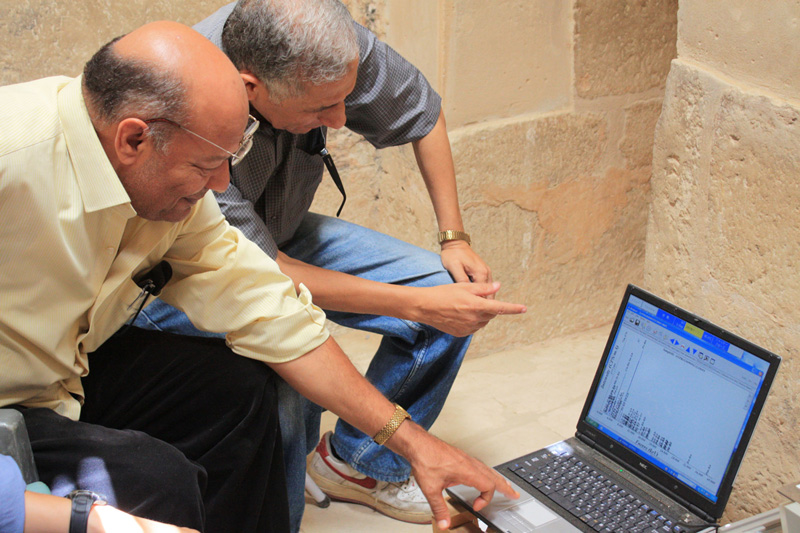
The Egyptian-Japanese Mission for the Mastaba Idout
February-March 2009
A survey was carried out regarding the restoration of mural paintings in Idout at Saqqara as the latter half of the sixth survey for the Egyptian-Japanese Mission for the Mastaba Idout.
Atsushi Ito (Geotechnical Engineering Group) and Tatsuaki Nishigata (Geotechnical Engineering Group) collected data using equipment such as displacement gauges that were placed in the underground burial chamber, and also gathered data for analyzing the structure of the ground. Tadateru Nishiura (Conservation and Restoration Group) carried out a study and collected data to clarify a system for preserving the environment of the underground burial chamber. Kosuke Takatori (Technology Development Group) performed a fact-finding survey regarding fungi on Egyptian cultural properties. Eriko Oka (Culture and Town Group) visited Egypt’s World Cultural Heritage Cities and studied lifestyles there. Hiroshi Suita (Culture and Town Group) worked to clarify the actual state of deterioration of cultural properties, and also made progress on developing restoration methods for the Idout mural paintings. Ahmed Shoeib (Conservation and Restoration Group) and Adel Akarish (Conservation and Restoration Group), joint researchers from Egypt, examined new methods for conservation in line with the current state of the burial chamber. The researchers performed collaborative research in Egypt, made efforts to understand the current state of the Idout mural paintings, and explored the possibility of new technologies.
* Through the assistance of the Sumitomo Foundation, work was also carried out to restore the mural paintings at the same time as this survey.
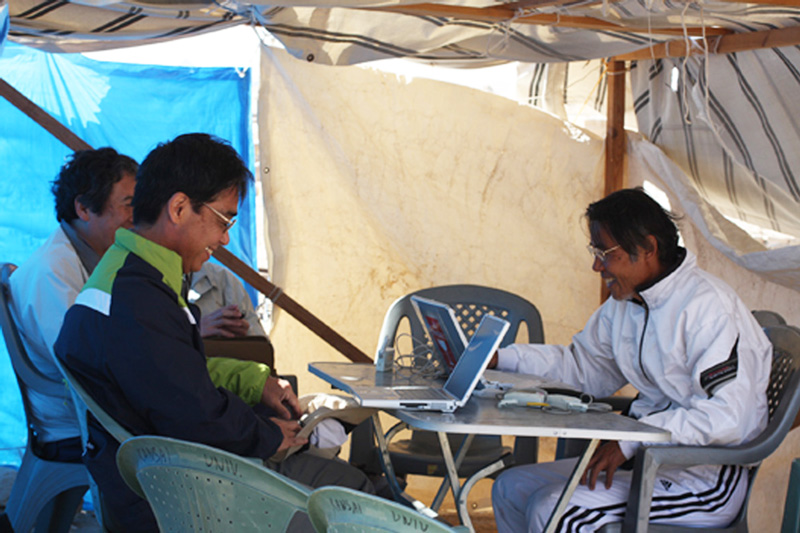
Visit to Japan and Research by Egyptian Researchers
January 2009
Joint researchers Ahmed Shoeib (Conservation and Restoration Group) and Adel Akarish (Conservation and Restoration Group) came to Japan in January 2009 and carried out various types of studies at Kansai University. They planned their studies based on Kansai University’s various types of analysis equipment and the equipment possessed by the ICP, and carried out collaborative research related to Ancient Egyptian mural painting technology.
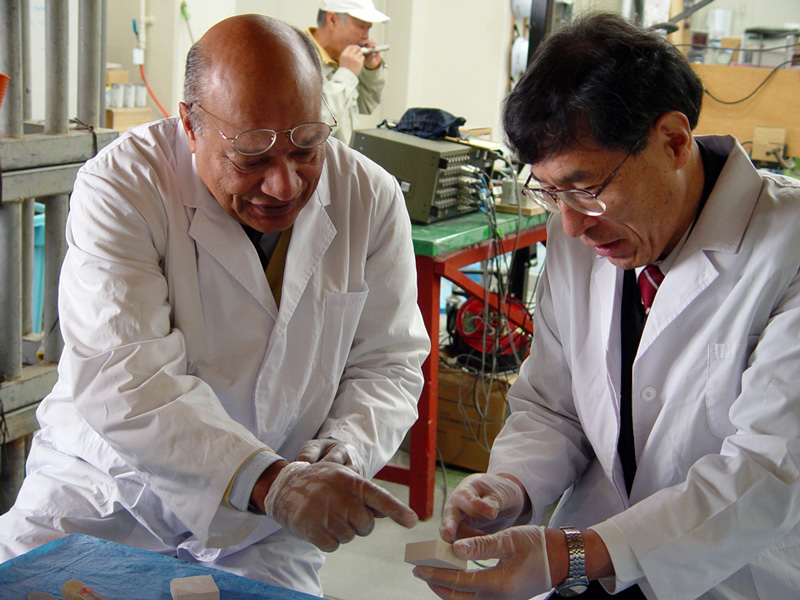
Egypt Survey
December 2008
A Japanese group, consisting of Tetsuaki Tsuchido (Technology Development Group), Hideya Kawasaki (Technology Development Group), Yoshinobu Nakamura (Technology Development Group), Takashi Mori (Culture and Town Group), Tsutomu Nakazawa (Culture and Town Group), and Hiroshi Suita (Culture and Town Group) visited Egypt. In Egypt, they performed studies and held meetings with Egyptian researchers Ahmed Shoeib (Conservation and Restoration Group) and Adel Akarish (Conservation and Restoration Group).
The main purposes of this visit were to confirm the current status of Egyptian historical sites from the standpoint of each field, to exchange views with researchers at research institutions, and to consider processes for future surveys. An additional major goal was to obtain samples including microbes.
At the sites of Saqqara, the group visited King Djoser’s Step Pyramid, the mastaba of Mereruka, and tombs including the “Tomb of the Two Brothers” and “Butcher’s Tomb.” Saqqara is home to the largest group of historical sites in Egypt, and includes a wide range of sites from a span of over 3,000 years including pyramids, mastabas, and tombs. Rather than dealing with the sites on an individual basis, they are considered as a group. The role of sites was examined from the standpoints of classical studies and natural history, and resources were gathered to think about the practical usage of these sites together with the position of Egyptology.
In Saqqara, the group focused its research on the mastaba of Idout, which dates from around 2360 BC and is located to the south of King Djoser’s Step Pyramid. Beautiful mural paintings remain underneath this mastaba, but because the ground is fragile many of them have begun peeling off and were in danger of being lost forever. Research was begun in 2003, and restoration work has been carried out since 2005. During this visit, new restoration materials were developed based on observation of the site from the standpoint of high polymer chemistry. The existence of microbe-related issues was also studied.
The group also visited Cairo University’s Faculty of Archeology and The National Research Centre in order to exchange views with local researchers. Exchanges of opinions were held regarding archeology and historical sites with researchers including Dr. Alaaeldin M. Shaheen, Dean of the Faculty of Archaeology at Cairo University. Kansai University concluded an academic exchange agreement with Cairo University in 2006. Since then, professors have come from the Faculty of Archeology and are carrying out research in Egyptology and cultural property science.
The National Research Centre is Egypt’s largest comprehensive research center. It’s said that this center has as many as 3,000 researchers. The group visited mainly the Environmental Sciences Research Division as well as the Chemical Industries Research Division, and exchanged views with researchers there. Actually seeing the chemical analysis facilities deepened mutual understanding and resulted in the creation of research plans.
In addition, the group visited Nile Delta sites, the Citadel of Qaitbay in Alexandria, the Islamic district, and other locations in order to understand the actual condition of a wide range of Egyptian historical sites. In the Nile Delta, cultural properties have different qualities and face different threats than those of Upper Egypt. Alexandria is on the Mediterranean Sea, so it faces its own unique issues as well. Tourist facilities are currently being constructed in the Islamic district, and studies were carried out from the viewpoint of the practical use of cultural properties.
Through this survey in Egypt, the group was able to strengthen mutual, complementary, and cooperative relationships during research between Japanese and Egyptian experts. In this way, the ICP intends to further develop its research in the future as well.
